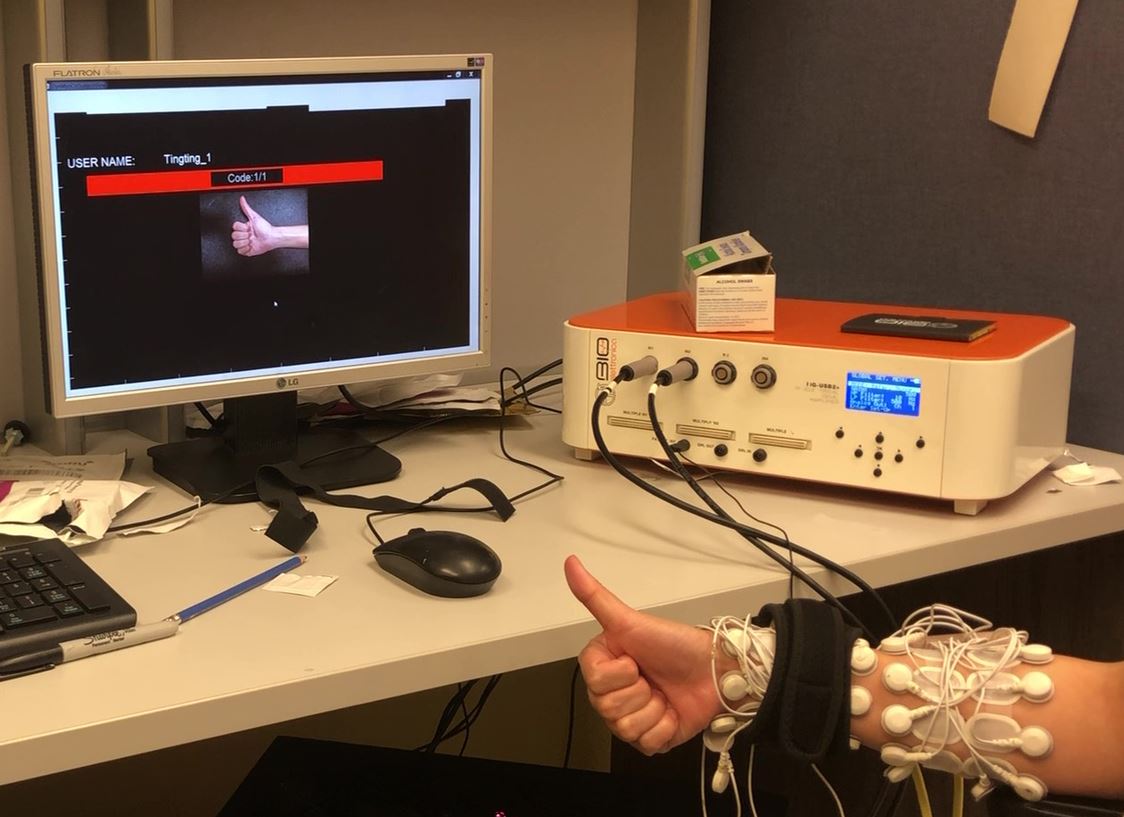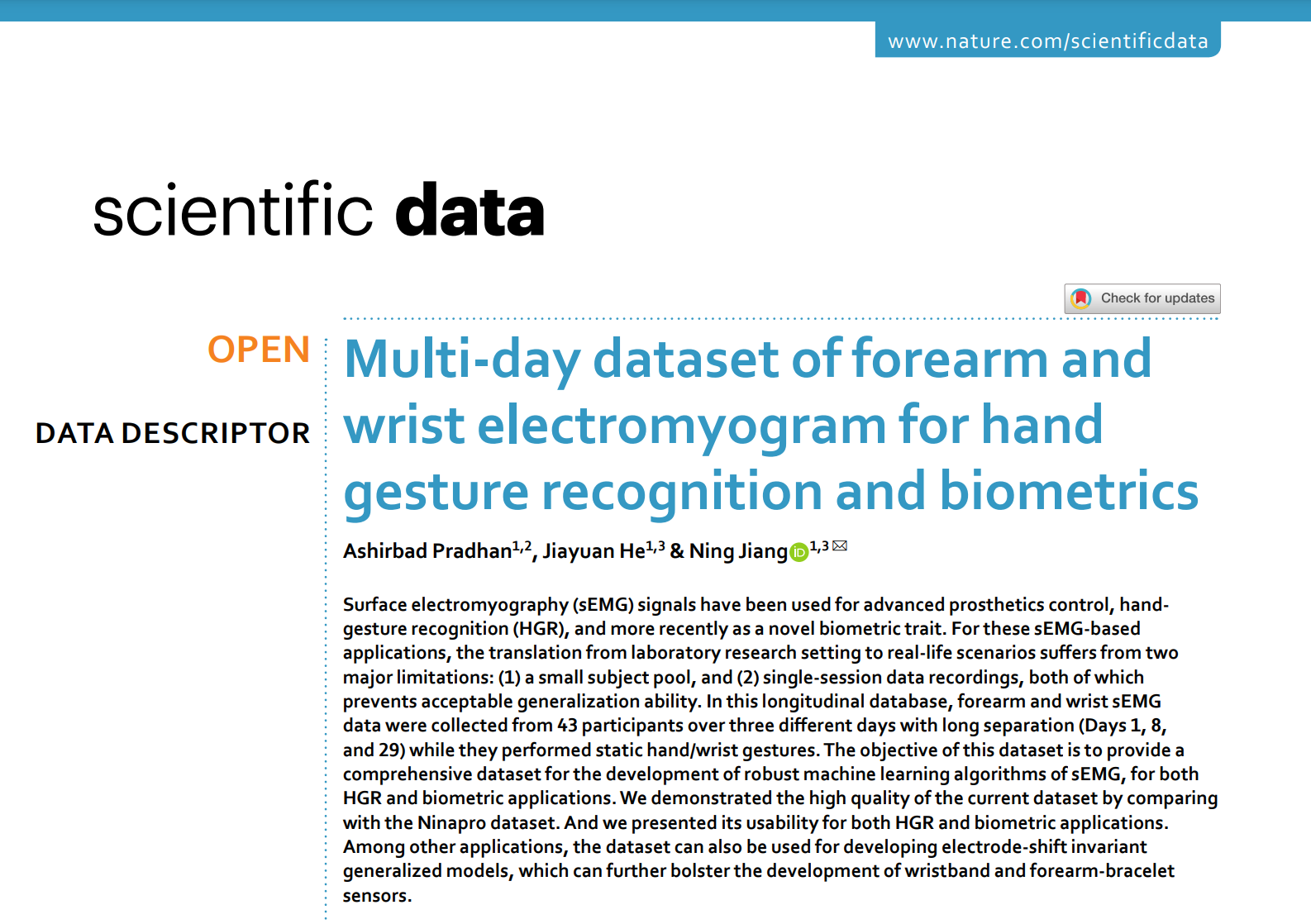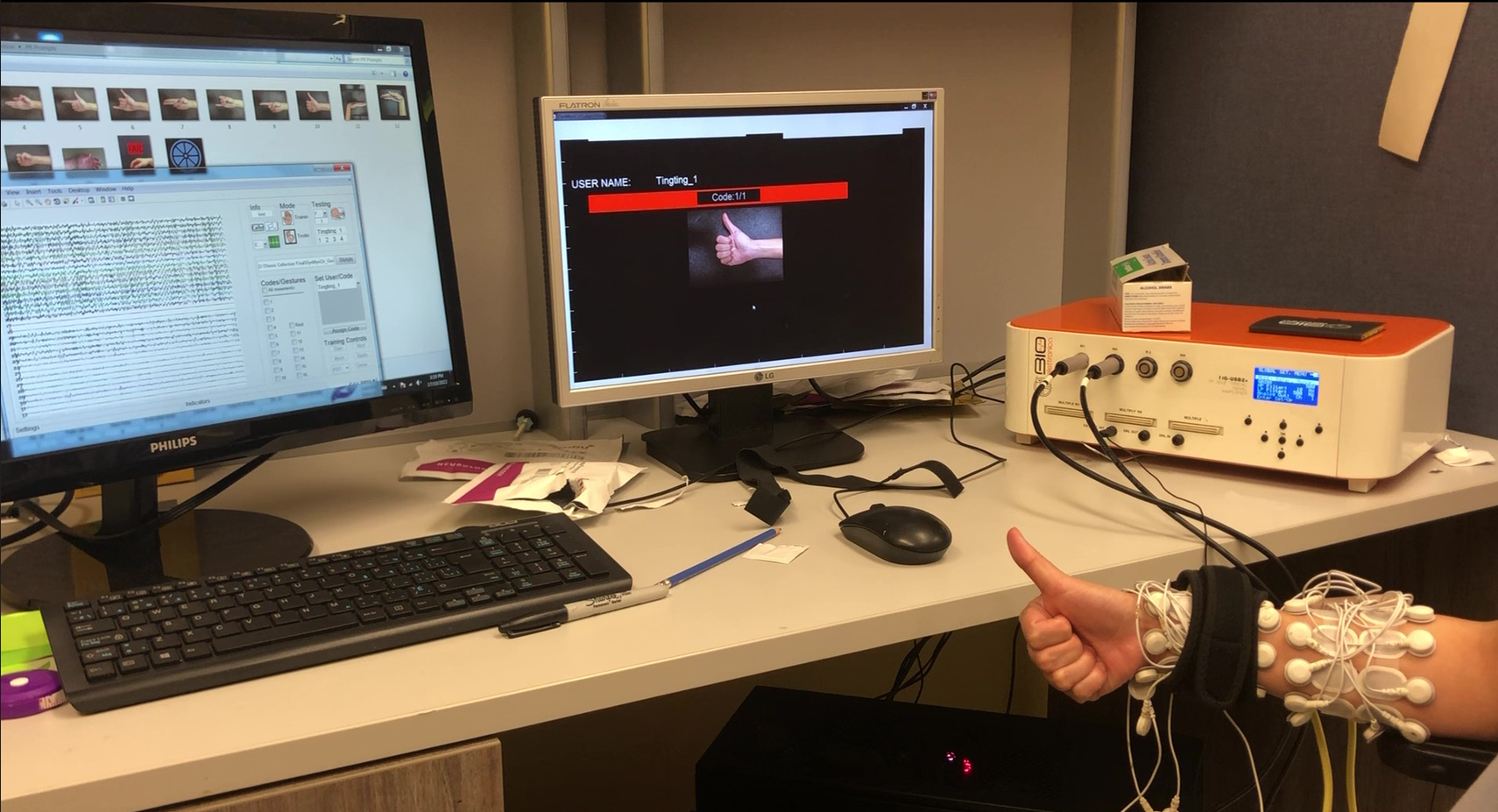Projects
Check out my lastest projects here
Real Time Gesture Recognition
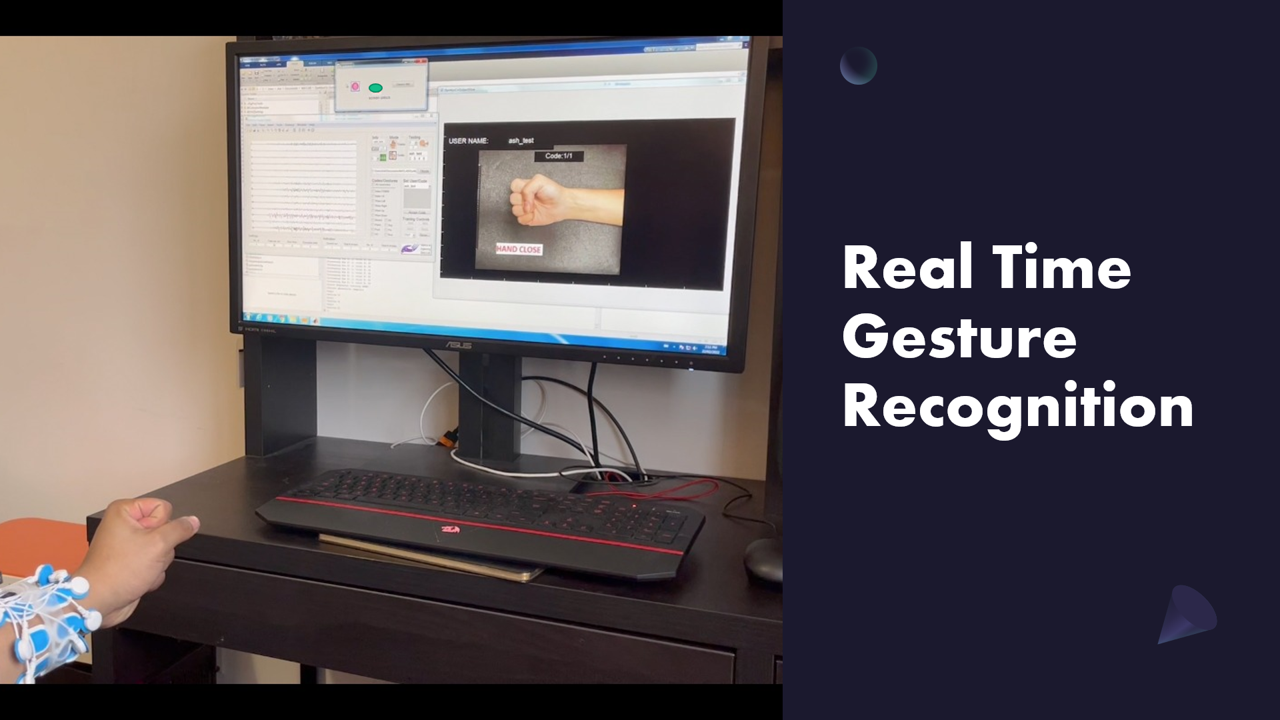
Electromyography (EMG) sensors collect muscle actvity which can be used for accurately predicting hand gestures.
With a custom designed software, training data can be collected from human participants as well as real time testing can be performed with a trained model.
Check next project: Accurate detection of 16 hand gestures
Biometrics

Biometrics are biological information or characteristics that can be used to identify and verify an individual’s identity. Conventional biometric traits such as fingerprints, facial recognition, and iris-scans are embedded in our daily lives in the form of authentication systems in smartphones, laptops, banks, etc. They provide improved security as compared to traditional password-based authentication systems or can be added as a second layer of security.
Haptics with force sensing (game) iteration 2
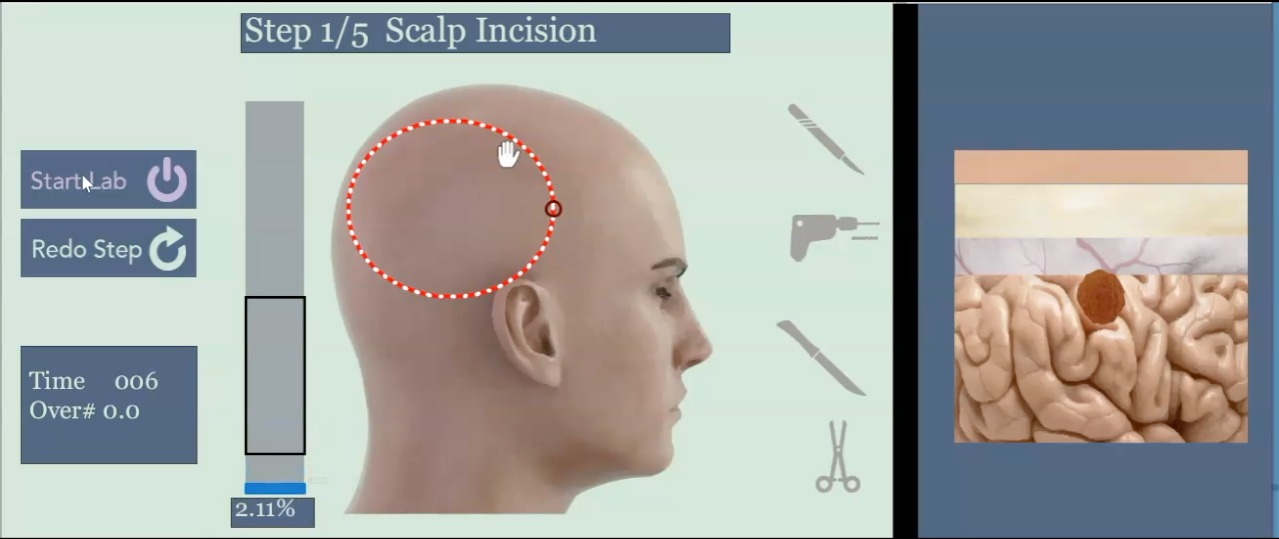
For the course project the task was to simulate an intra dural brain tumor removal surgery where the surgeon has to perform 4 stages of surgery:
- incision on the skin layer
- incision on the bone layer (involves milling and cutting)
- incision on the dura matter
- extraction of brain tumor
Using a gamification-based approach our objective was to simulate each stage and provide haptic feedback for each stage. Additionally, evaluation metrics for each layer were implemented as part of the gamification to record the learning curve of novice surgeons.
A working demo video is shown below.
Haptics with force sensing (game)
.png)
For a course project it was proposed to build an augmented stylus and integrate it into a surgical training tool. The motivation for choosing such a topic is to provide low-cost (~200 CAD) haptic-based surgical training which can be used to train not only high school students but also professionals in the field. Currently, other high fidelity training tools have high graphical rendering. Our novelty lies with the cheaper cost and with the use of an augmented stylus for force sensing and haptic feedback.
High Density Electromyography (HD EMG)
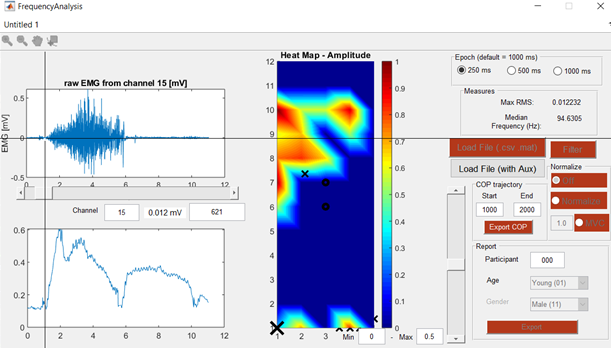
The High Density Electromyography Signal processing tool is designed using MATLAB. The user interface allows to plot heat maps from multichannel EMG sensors. It also allows standard signal processing such as 1) filtering 2) change epoch size 3) extract Centre of Gravity (CoG) from the heat maps and 4) extract feature values at certain timestamps: amplitude, frequency, intensity, entropy.
PID control for Haptics

The objective of the project was to explore force feedback designs using the Haply device. For this assignment, we were supposed to regulate the Haply movements using Proportional (P), Integrative (I) and Differentiate (D) control. Some fundamental questions regarding PID control were answered through this project.
